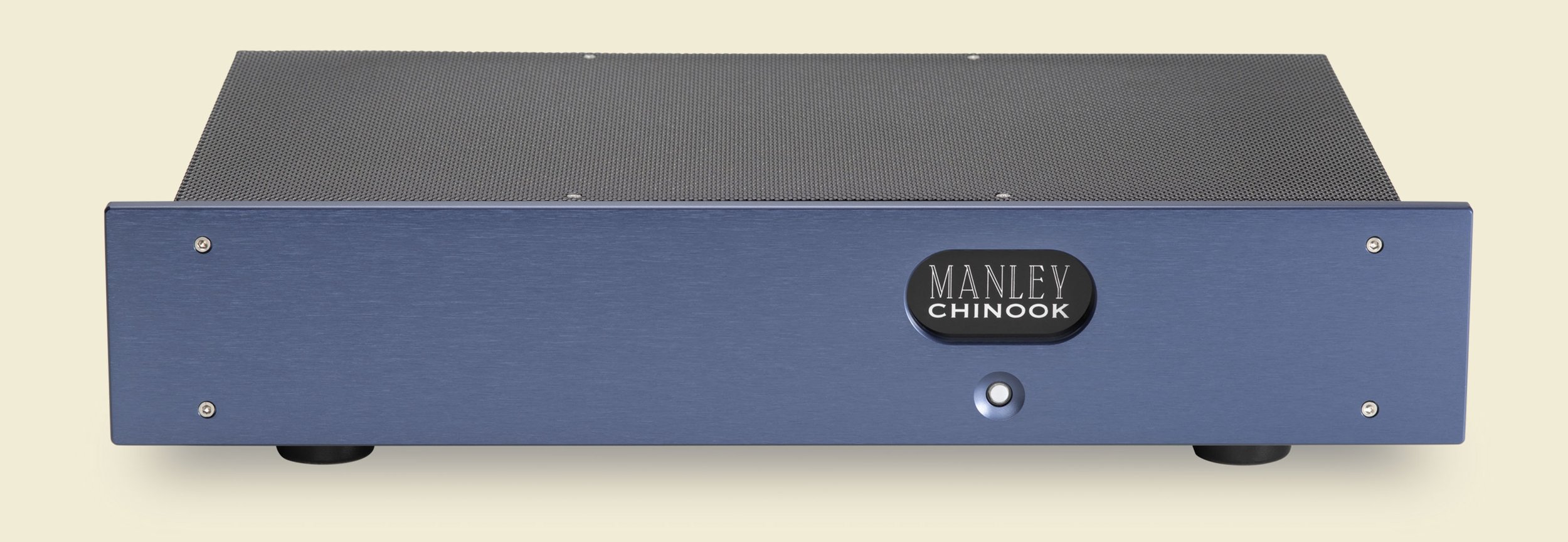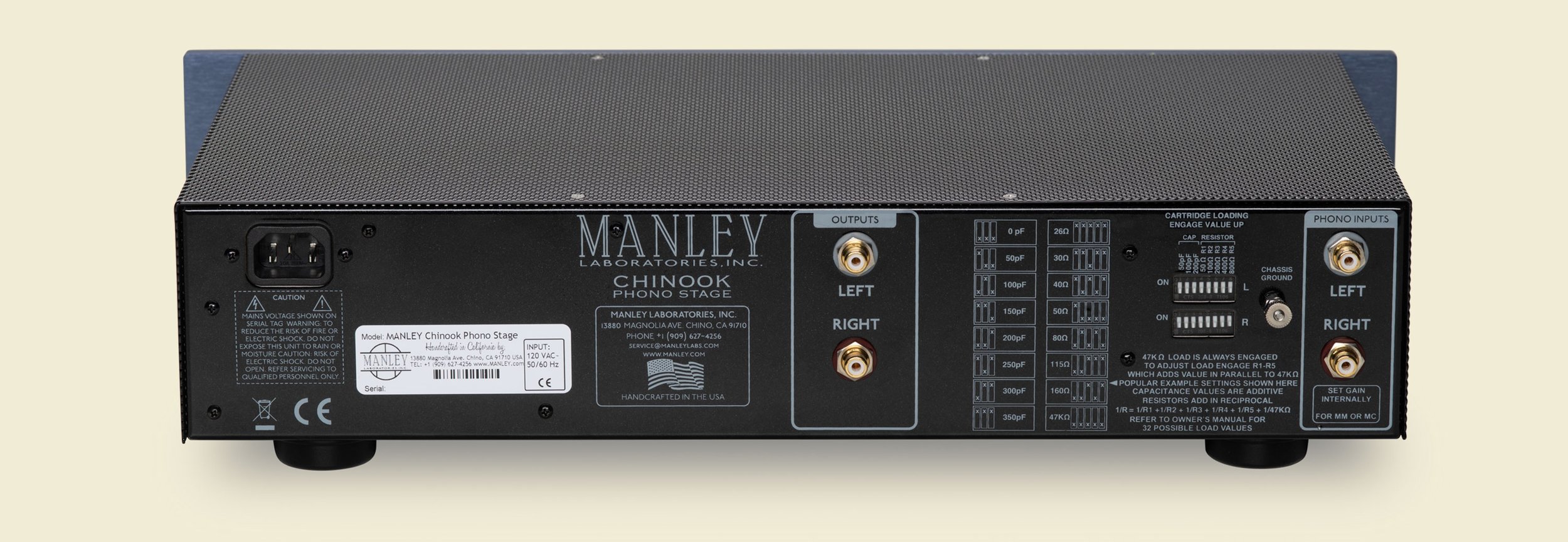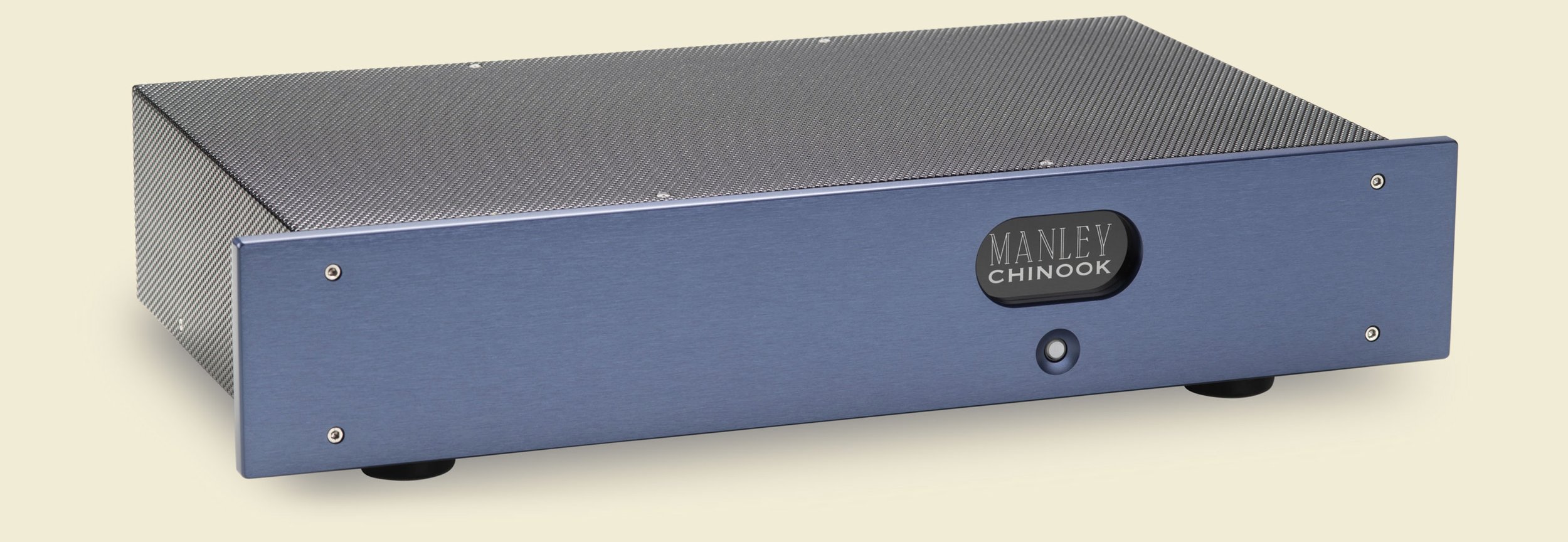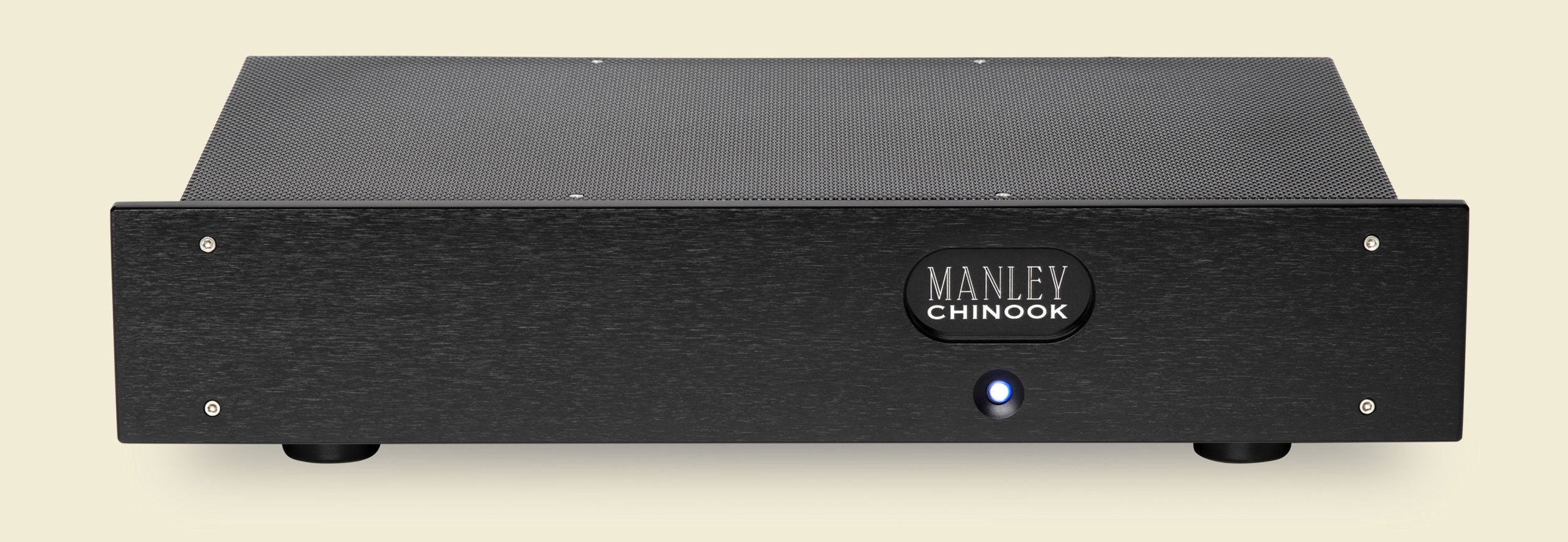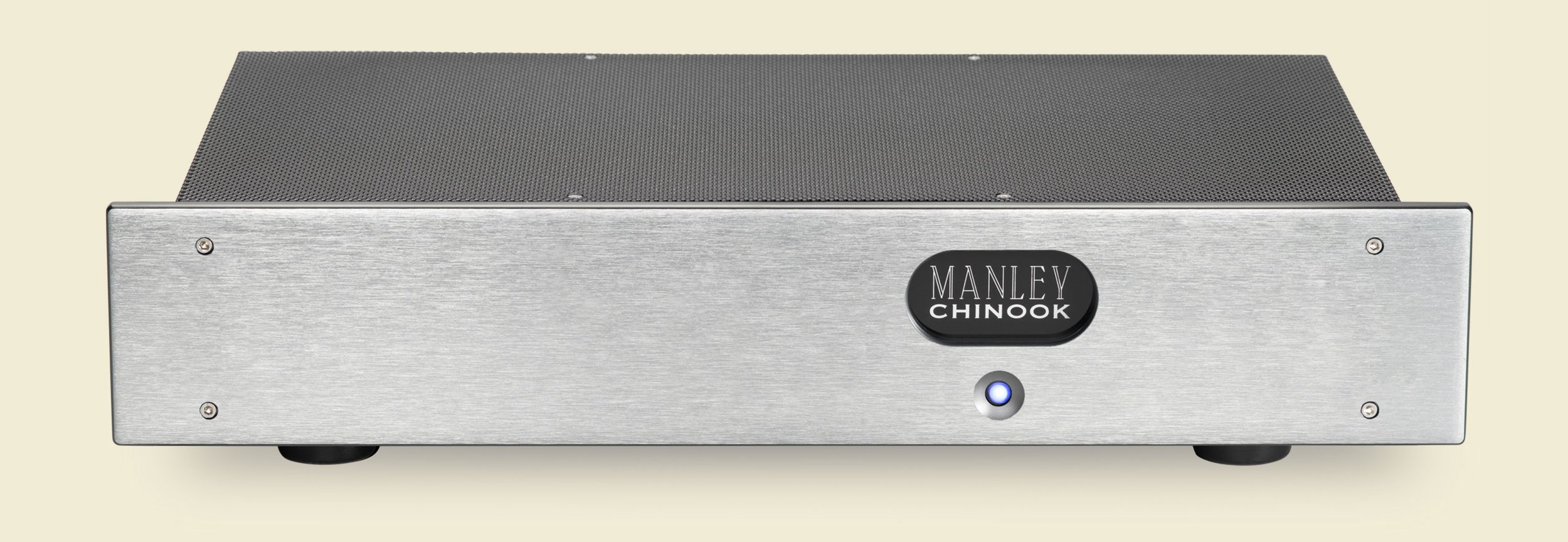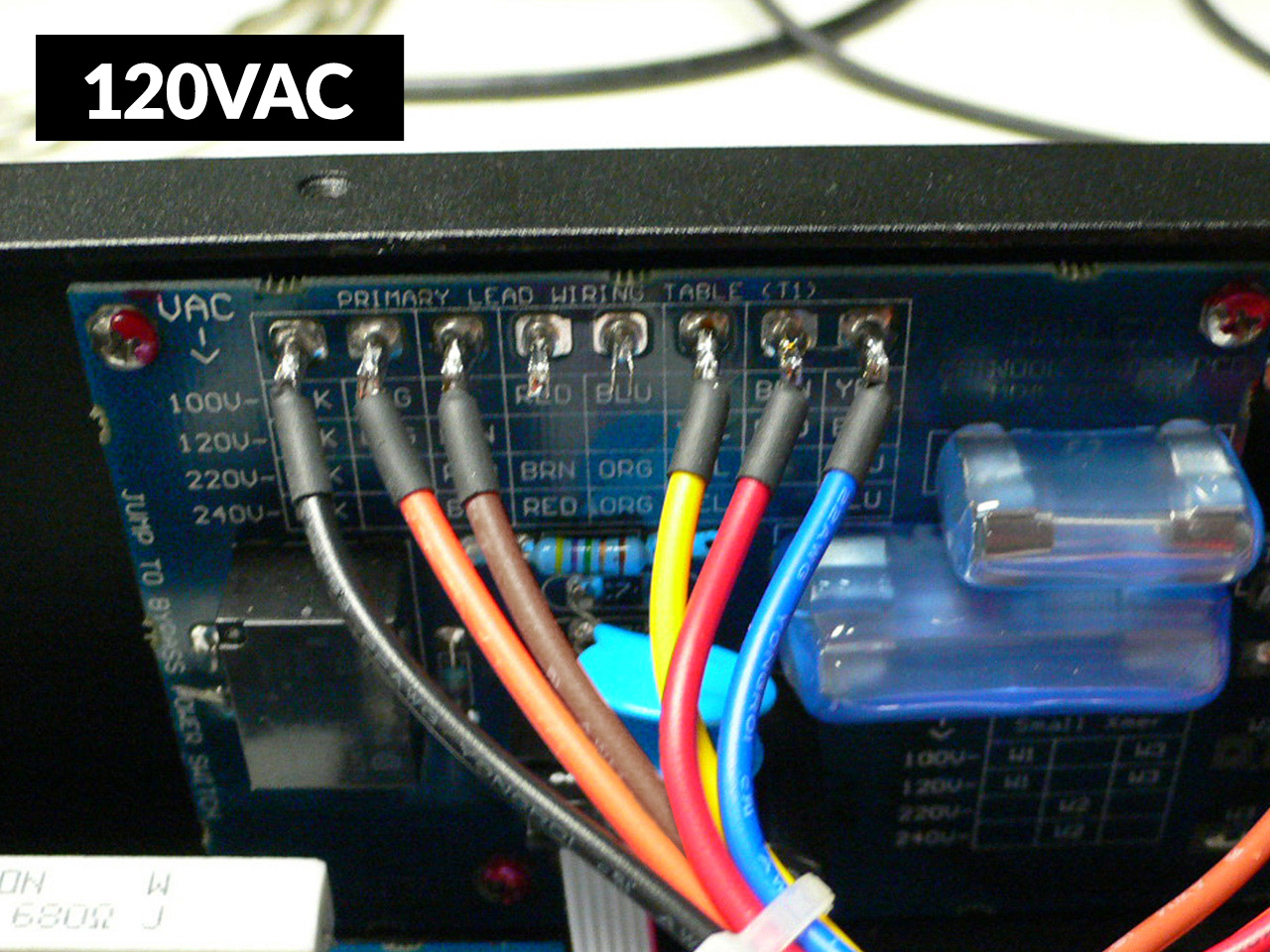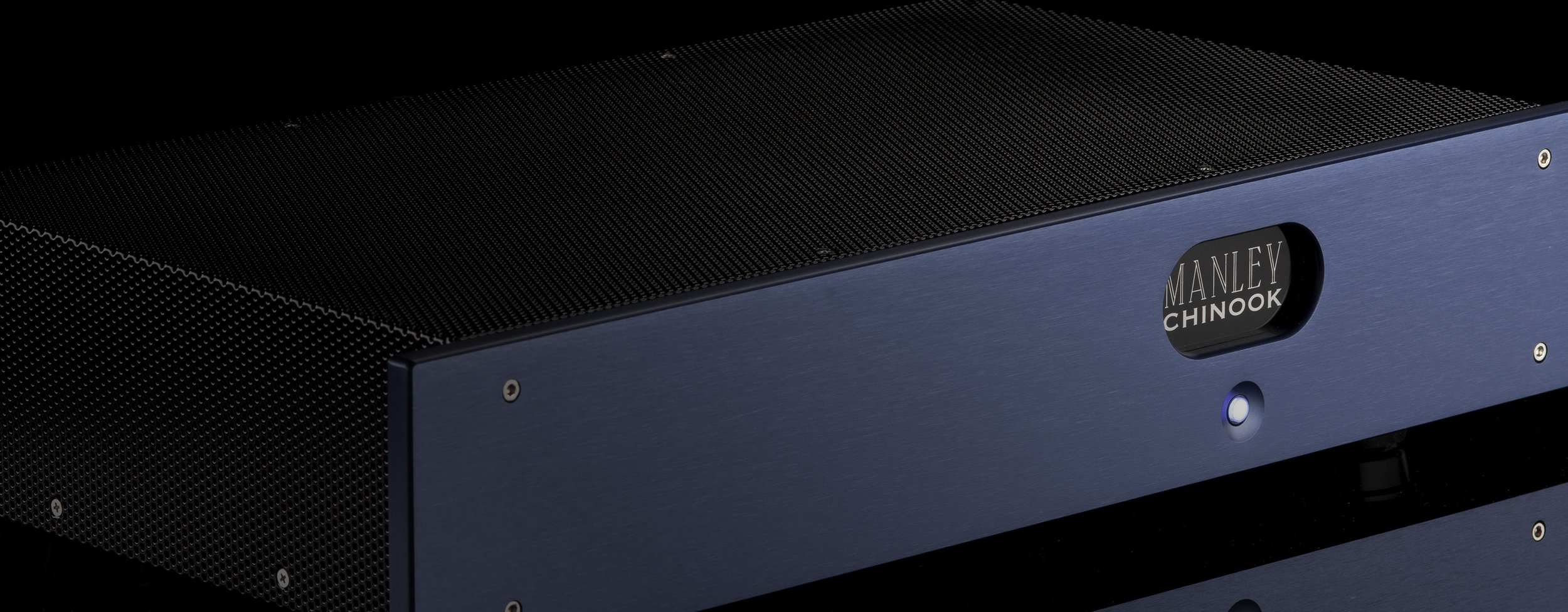
The spawn of the famous STEELHEAD, our CHINOOK uses the same clean and quiet audio circuit design.
45 or 60dB of GAIN can be set internally and rear-panel dip switches select input resistive and capacitance choices. There are tons of options to match any Moving Coil or Moving Magnet cartridge. Set it and forget it! Designed for the real music lover - not the switch tweaker - the CHINOOK’s elegant design and efficient construction keep the price affordable AND devotedly handcrafted in the USA at Manley Labs.
"To think that the Manley Chinook is designed and built in the U.S. at the level of quality and sophistication that it possesses and retails for what it does is something of a minor miracle in this day and age. I can't recommend the Chinook highly enough."
- Mark Pearson, Positive Feedback, July / August 2014 -

DETAILS
Angling for an affordable yet world-class vacuum tube phono stage? The hunt is over! The spawn of the Manley Steelhead - one of the world's greatest phono preamplifiers - Stereophile Class A Recommended Component and The Absolute Sound's Preamp of the Year, has arrived. The Chinook epitomizes the sound of the Steelhead. Designed for the music lover, not the switch tweaker.
Like the Steelhead, each channel employs the two triode sections of a 6922 for amplifying duties with highly accurate passive RIAA equalization networks. There is also no Global Negative Feedback deployed. In the Chinook, the signal is then directly coupled to another 6922 dual triode serving as the output driver in a White Follower configuration. This output stage circuit is our favorite because of its super-low output impedance and beefy current-driving capabilities. It can drive long cable lengths and difficult loads, tube or solid-state. Bring it on. No wimpy cathode followers here!
Setting up the Chinook couldn't be easier. There are two internal settings for optimal gain: 45dB for Moving-Magnet cartridges and 60dB for Moving-Coil cartridges. Set it and forget it! The back panel contains DIP switches for adjusting the input resistive and capacitance loading values. 31 possible options between 26 and 800 Ohms plus 47k Ohms and 7 capacitive loading choices between 50 pF and 350 pF provide flexibility to match any cartridge and fine tune the tone. Audiophile-grade and time-proven componentry is used throughout, embodying Manley's dedication to seductive sonics, combined with the reliability that professionals around the world depend on. At just about a quarter of the price of our revered Steelhead preamplifier, the Chinook's focus is on elegance of design, careful execution, efficient construction, and appreciable quality.
Designed and built in California, the Chinook exemplifies Manley's commitment to our local community and to a simple, clean, and quiet signal path. The Chinook demonstrates the supreme linearity of vacuum tubes while providing the flexibility needed to embrace any turntable setup. Everything from the most exotic 180 gram audiophile pressing to 25 cent thrift-store classics will be reproduced accurately and musically.
Don't let this one get away! Hook a Chinook!
SPECIFICATIONS
Vacuum Tube Complement: 6922 x 2 (gain stage) plus 6922 x2 (output stage). Any 6DJ8, 7308, ECC88 types may be used.
Unbalanced Input and Output connections via Manley Teflon ® & Gold plated RCA jacks
Automatic Mute Timer: On initial power up output jacks are muted for approximately 45 seconds. Automatic mute circuit allows tubes to warm up and circuitry to settle. At power down, output jacks are immediately muted.
Input Termination Capacitance: 3-position user-selectable capacitor values of 50pF, 100pF, and 200pF yield resultant combinations of: 50, 100, 150, 200, 250, 300, and 350pF. Use these settings typically for Moving Magnet (MM) cartridges.
Default Input Impedance: 47k Ohms, with no other DIP switches selected. Use this setting typically for Moving Magnet (MM) cartridges.
Selectable Input Impedance: 5-position user-selectable resistor values of 50, 100, 200, 400, and 800 Ohms. There are 32 possible loading possibilities. Use these resistive loading choices typically for Moving Coil (MC) cartridges.
Gain: Internal DIP switches select 45dB or 60dB
Deviation from RIAA curve: Less than ± 0.5 dB from 20Hz to 20kHz at any gain setting. Typically less than ±1dB from 10Hz to 100kHz.
Distortion (THD+N) (47k Ohm Input Termination, 45dB gain, 1kHz sine, 0dBu output): Typical 0.010% THD+N, into 100k Ohm load, BW = 100Hz-22kHz
Distortion (THD+N) (47k Ohm Input Termination, 45dB gain, 1kHz sine, 0dBu output): Typical 0.030% THD+N, into 600 Ohm load, BW = 100Hz-22kHz
Dynamic Range (Gain set to 45db, 200 Ohm source): 91dB @ 1kHz, 0.1% THD+N, BW = 22Hz-22kHz
Dynamic Range (Gain set to 45db, 200 Ohm source): 107dB @ 1kHz, 1.0% THD+N, BW = 22Hz-22kHz
Noise Floor at 45dB gain setting with shorted input: -84 dBu, A-weighted
Noise Floor at 60dB gain setting with shorted input: -75 dBu, A-weighted
Maximum Input at 45dB gain setting with 20 Ohm Source Z @ 1kHz into 10 kOhm load: 250mV RMS = +34.5 dBu @ 1% THD+N BW=22Hz-22kHz
Maximum Input at 60dB gain setting with 20 Ohm Source Z @ 1kHz into 10 kOhm load: 40mV RMS = +34.2 dBu @ 1% THD+N BW=22Hz-22kHz
Maximum Output: +37dBu @ 1kHz, 1.5% THD+N into 100 kOhm load
Output Impedance: 91 Ohms
Minimum Recommended Load: 2500 Ohms
Internal Power Supply: Fully regulated linear B+, Heater, and control voltage rails.
Operating Mains Voltage: Units are built for original destination country's mains voltage: 100V, 120V, or 220-240VAC as indicated on the serial number badge.
Power Consumption in Standby mode: 1 Watt (8.0mA @ 120VAC)
Power Consumption: 42 Watts (345mA @ 120VAC)
Mains Voltage Frequency: 50~60Hz
Power Transformer: Toroid contruction for low radiation.
Mains Fuse for 100V operation: 600mA SLO-BLO size 5mm x 20mm
Mains Fuse for 117V-120V operation: 800mA SLO-BLO size 5mm x 20mm
Mains Fuse for 220V-240V operation: 400mA SLO-BLO size 5mm x 20mm
Standby Transformer Fuse for all voltage operation 100V-240V: 10mA, SLO-BLO, MDL type size 1/4" x 1 1/4"
Badge Lamp: LED illumination
Dimensions: W=19", L=11", H=3 1/2"
Shipping Weight: 15 Lbs.
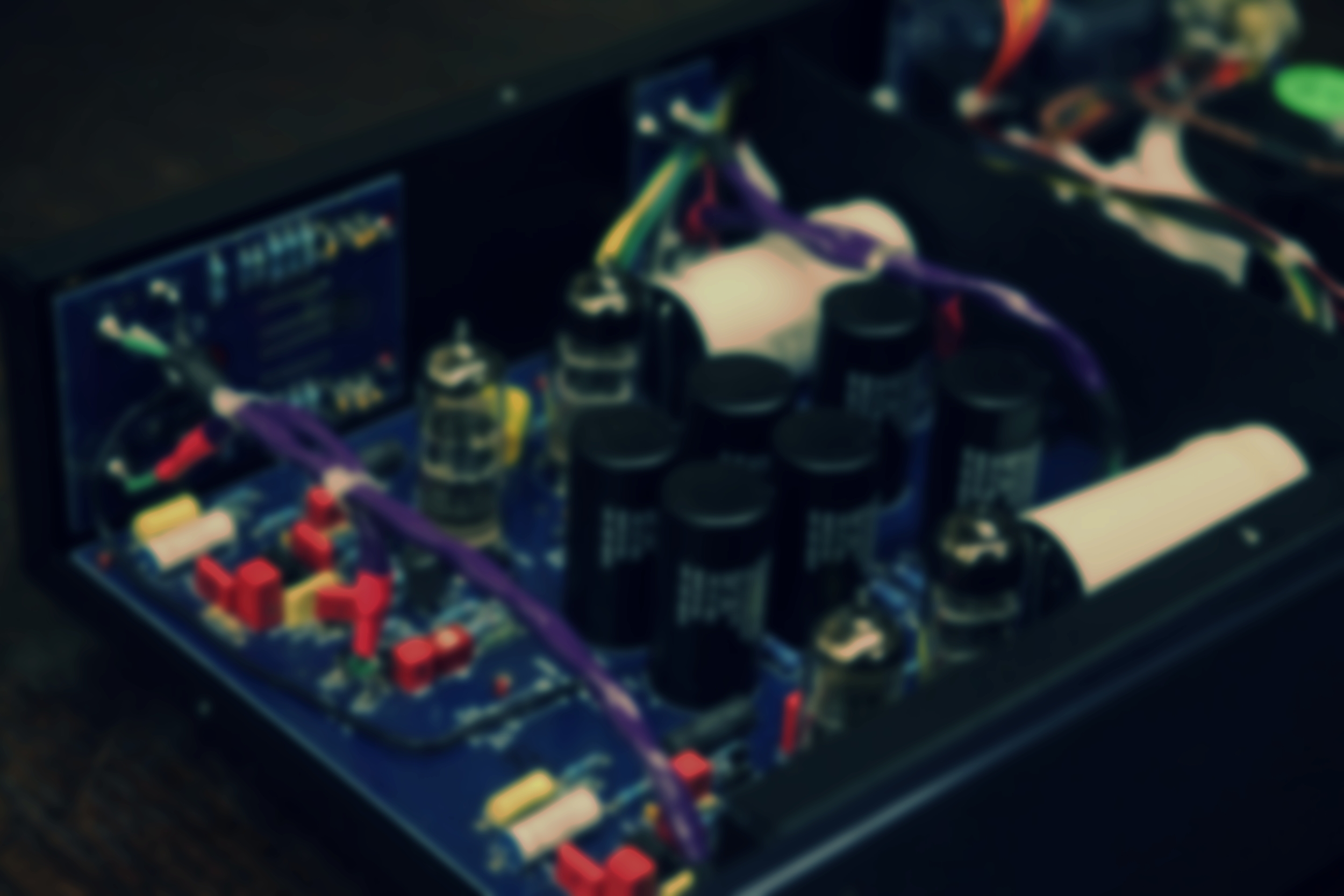
REVIEWS
“Listening to my system with the Manley Chinook as part of it offered the deepest, most moving, and fastest track yet into a one-on-one communion with the cherished songs, sounds, stories, and moods laying in wait in records, slivers of magic that can change the course of our lives if we let them in.”
- Michael Lavorgna, Twittering Machines, April 2023
“The Chinook's dynamic capabilities defied any hint of clipping or compression, while the sonic scale was utterly massive. I had to dig out a pair of vintage electrostatic speakers just to hear them 'disappear'. Trust me: the Chinook is simply irresistible.”
- Ken Kessler, HiFi News, January 2022
“The Manley Chinook deserves all the praise it’s received by the audiophile press cognoscenti…it’s admittedly not cheap — but it’s worth saving up for. Its excellent coherency, neutrality, and resolution is balanced by excellent overall tone, spaciousness, and ability to sound very good, no matter the genre of music. The giant killer lives!”
- Ken Micollef, Analog Planet, August 2022
"...the Chinook was one of the best (or rather the most beautiful and most attractive) phono preamps we've ever had the honor with. Great job, great machine..."
- Daniel Březina, Hi-Fi Voice (Czech)
"It combined the sense of relaxation and abundant musical flow that tubes do so well...with the neutral tonal balance of good solid-state designs."
- Michael Fremer, Stereophile, August 2012
"We expected the much-enhanced clarity – we did not expect to hear so much that we never heard before! The Chinook has fundamentally altered our listening experience."
- Joe S, Manley Customer
"OMG…I have been missing so much music my entire life. Due in no small part to your company’s engineering of this superb phono stage preamp, those of us on a beer budget can enjoy the champagne tastes that your equipment delivers."
- C. Huffman, Manley Customer
"Thanks for building my Chinook. It replaced my Audio Research PH2. It was a great phono stage, however the Chinook really DOES release sonics I never heard before. Thanks – I LOVE 💘 MY Chinook."
- Bob L, Manley Customer
"About a year ago I got a Manley Chinook…we are really stunned on how great this unit sounds! We just sit there and listen and just melt into the music. It sounds so real it is incredible; especially at its price point."
- J. Sankner, Manley Customer
“All I can say is is WOW…the biggest thing that I noticed was layers, lots and lots of layers to the depth of the soundstage. Certainly a more holographic soundstage. I listen to a lot of female vocalists and there is just an extra veil that was removed. Bass and mid bass were very deep and extended. Can’t wait to listen again tonight…thank you again for the fine product and musical bliss you provide in your products.”
- Jason M, Manley Customer
"Very, very good product that's not only great sonically but incredibly quiet at the same time – not a trace of hum!"
- High Fidelity, July 2012
"To think that the Manley Chinook is designed and built in the U.S. at the level of quality and sophistication that it possesses and retails for what it does is something of a minor miracle in this day and age. I can't recommend the Chinook highly enough."
- Mark Pearson, Positive Feedback, July / August 2014
"The captivating musical sound of the Chinook has made me a believer in valve phono stages once again. At its very modest asking price consider it a no-brainer for anyone looking to explore the smooth sweet sound of a turntable connected to tubes."
"The Chinook provides spot-on imaging and recreation of the original recorded space, along with killer dynamics and a broad frequency spectrum—all at a reasonable price....we are happy to award it one of our Exceptional Value Awards for 2012."
"How should a phono preamp play? Simple, like the Manley Chinook! Few contradictions, many merits. The Chinook casts a spell on me."

OWNER'S MANUAL
Click here for the Chinook Upscale Audio Special Edition manual.
FREQUENTLY ASKED QUESTIONS
Q: I want to use another external step-up transformer. Can I run it into my CHINOOK with the load set for 47 kOhms?
A: Sure thing! You can totally run an external MC step up transformer and run that into the CHINOOK input and set the load for 47 kOhms and set the GAIN to probably the lower setting.
Q: I have an XYZ Model Blah Blah cartridge. Where do I set the loads? Is it an MM or an MC cartridge? Where do I set the GAIN?
A: GAIN is GAIN. It doesn't care whether it is an MC or MM cartridge or an external step up transformer. Usually MM cartridges are going to be on the lower gain settings, like around 40dB of gain in a phono stage, and MCs on the higher gain settings, like around 60dB of gain.
Usually you'll see MM cartridges with a typical output of 1 milliVolt. MC cartridges maybe typically have about 0.5 milliVolts, for example. You'll have to see you much gain you need in your system and set the GAIN for as little as you can get away with. If you have cranked your preamplifier's Volume Control all the way up and you still can't play loud enough, then switch the GAIN up on your phono stage. What you don't want is MAX GAIN (and MAX NOISE) in your phono stage and then you line stage's Volume Control is barely cracked open at 9 o'clock.
LOADING also doesn't care where you set the gain. You can set the loading for any cartridge or external step up transformer wherever you want to. You will never harm anything or blow anything up. The loading resistor helps damp high frequency resonances of cartridges (and other inductors). Adding capacitance to low impedance cartridges will have no audible effect. Most MM cartridges are going to require a standard 47 kOhms resistive load setting with some capacitance added in parallel with the resistor. You would ultimately also want to add the cable capacitance in your calculations.
Read your Manley CHINOOK Owner’s Manual as there is lots of info about this topic in your manual…and watch this helpful TECH TIPS video!
Always refer to your cartridge manufacturer's website or owner's manual for the suggested load and then set your Manley phono stage to that load setting or as close to it as possible.
"DC Resistance" and "Internal Impedance" refer to the measurement of the winding inside the cartridge and that is NOT what the recommended load setting is.
If it is not clear on the cartridge maker's website or owner's manual what the Recommended Load for their cartridge is, please contact the cartridge manufacturer and have them clarify what the recommended load for their cartridge is. We are not going to know that! We would have to Google it just like you will. But we can provide lots of choices and flexibility to set the load close to what you need.
And again, being exactly on the number they suggest or being a few Ohms different is not going to make or break anything. All of these load settings have a very very subtle effect and they are difficult to even hear sometimes.
So relax, and listen, and enjoy your music!
Q: Hey! I get a loud POP or BANG noise through my audio system! It is random. What's wrong with my phono stage making this noise?
A: It's not the phono stage making any noises. We have seen this over and over when static on the acrylic turntable platter builds up and has nowhere to go except through the cartridge and through the CHINOOK into the rest of your hifi system eventually getting amplified by everything until you hear it through your speakers. This is not a problem with the Chinook. It is just amplifying what is being sent to it. It is just doing its job.
You have got to get a ground to the platter somehow so that your Van de Graaf generator has a place to discharge to besides through your audio system. See if you can get a ground wire to the center spindle housing, maybe under the spindle bearing of your turntable. Contact your turntable manufacturer asking them how to get the static that builds up on the platter to dissipate through a ground wire instead of through your cartridge/audio path! Note: we have seen this happen more often with the Hana SL cartridges than any other brand perhaps due to the Hana’s ABS plastic body that also allows the static to build up on it and not dissipate through any ground path. Or it might because it is very popular.
Another idea is to purchase this AcousTech Big Record Brush with Grounding Cord, ground the brush with the ground wire, and run it over your record and turntable to remove static before you play each record, especially in dry climates and low humidity winters.
This is how one customer solved the static build up problem after grounding his spindle-bearing-housing with a wire to the mains outlet ground:
So, as is my custom, I auditioned 10 or so different mats when I was originally setting up this Prime-Sig. I’d listen to the same ‘reference’ material with each, mainly Steely Dan’s Aja and Elton John’s Yellow Brick Road. I’ve found that a critical listening of both will tell me what I need to know about almost any component in my signal chain. On my previous turntable I used a sorbothane mat with a thin extreme carbon fiber speed-mat on top of that. So I started there, but I didn’t like what I was hearing so then cork, acrylic, blah, blah, blah. After auditioning many, I settled on the Funk-firm 5mm.
The leather mat I’ve now put on top of the funk-firm was one of the many I had tested individually and rejected. I got it from Hudson Hi-Fi. It’s their ‘Premium Swiss Leather’ mat. And while I didn’t like it on it’s own, I don’t feel it really detracted much IN ADDITION to the Funk-firm, other than requiring I raise my tone-arm height slightly. For whatever reason, adding it into the mix KILLED the static discharge issue. I can’t say I understand exactly WHY this was the case, but I don’t really care just as long as it WAS the case. Here is a current link on Amazon.com for the Hudson Deer Hide Mat. It seems to work!
Q: Why doesn’t my other phono preamp have this problem??
A: Because the frequency response and slew rate and ability for the CHINOOK to amplify anything coming into it, even a fast impulse waveform such as what a static discharge represents is superior to [another] phono stage.
Try to get that acrylic platter spindle bearing housing grounded. I had to run wire to the underside of my VPI HR-X center spindle housing to stop the static in my system.
Q: How do I know that I have the static build up problem on the LP and it’s not just your CHINOOK circuit making noises?
One test we always recommend is for you to power up the system, set the volume control for a comfortable listening level, and don't drop the stylus on the record, just let everything sit there ready. If it never pops under that condition, you can be sure that this is a static discharge problem. (The LP record is building up static on it and then transferring this through the needle to the phono stage to amplify.) In other words, if it ONLY pops when the needle is on the spinning record, then we have this static buildup issue happening. Let us know what you observe.
Q: My unit inside looks different from the picture. Which ones are the input tubes?
A: Later models have the main audio PCB rotated 90º CCW so that the input tubes are located on the left side of the unit, not towards the back. This keeps both input tubes more equidistant and furthest away from the power transformer for slightly improved noise level. The 6922 input tubes are nearest to the GAIN select switches. You can follow the wiring from the INPUT RCA jacks to the INPUT tubes. The output tubes are closest to the big giant white output capacitors and you can follow the OUTPUT cabling from those capacitors to the OUTPUT RCA jacks.
Q: I think that I want more gain.
The GAIN is adjusted by changing the resistors as the SOURCE of each FET in the first two gain stages. On the PCBs it is done with the DIP switches for 40vs65dB and then 5dB jumpers on the other parallel SOURCE resistors for the SE Upscale Audio Edition.
HOWEVER, it is always suggested to use the STOCK settings and make sure you don't really need the GAIN. If your preamp's volume control is out of range and you cannot still get enough level out of your whole system, then you need more GAIN.
With more GAIN comes more NOISE so start with the stock settings before pre-judging that you need extra GAIN. Most folks do not need more GAIN and this is not like 720p vs 4K on a television where the bigger number is "better".
There is a more developed discussion of SYSTEM GAIN on the STEELHEAD web page so that you can more fully appreciate what we are saying here.
Q: I am looking at a bit of tube rolling on my Chinook phono stage. I am considering replacing the tubes with Voskhod 6N1P-EB. These have the same specs as 6DJ8 except the filament is double at 600ma. Is it safe to replace the 6922 tubes with these tubes??
A: We do not recommend it, no. Each channel has available 1.2A at 12.6V maximum heater current configured with the two tubes, input and output 6922 tubes in series. The stock 6922 draws 0.300 Amps each, and then times two tubes, we are running 0.600 Amps per channel, half of the maximum rating of the power transformer. If you install your Voskhod 6N1P-EB tubes, you’ll be at the maximum rating of the power transformer, and beyond that, the rectifiers are not going to be happy either.
Q: Help! Everything was fine and now I am not getting any sound. The blue button still lights up but the badge lamp is out.
A: Sorry! Heater supply diodes have failed. We have some better rectifier diodes to install for you! On the power supply board, D9, D10, D11, D12 need to be replaced with some Micro Commercial Components (MCC) Schottky 5A Barrier Diodes Part# SR5200-TP. If you would like to change these out yourself, here is a link to those parts on Mouser.com. Be aware that these diode legs will be too thick to fit through older PCB holes and drilling them out to fit will wreck the plate-through, so if replacing these in the field, be sure that both sides of the PCB get soldered and also mount them at least 0.250” above the board so they can breathe better.
Q: How do I reconfigure the mains voltage when I move to another country?
A: These photos show the different wiring configurations for the toroid transformer for 120V, 220V and 240V mains voltage operation. There is also a set of jumpers just below the two mains fuses to reconfigure as well. Due to the high voltage and safety concerns, changing the operating voltage should be performed by a competent technician experienced working with electronics. And always you must change the fuse values to the appropriate value and type as specified in the owner's manual every time you change the operating voltage of the unit! There are some more notes below.
Q: Can I update my Manley CHINOOK to an OASIS Phono Stage?
A: Nope. We cannot convert a CHINOOK to an OASIS. Sorry. While the basic audio circuitry is similar, the two builds are all completely different. Different chassis. Different PSU…


